Water Bottling Consent
General Information on Water Bottling Consent
Due to recent interest in water bottling consents, GWRC has pulled together information relating to water bottling consents and how freshwater is managed in the Wellington region.
Background Information
Fresh water is highly valued and is essential for our aquatic life, our economy, our health and general well-being. Surface and ground water throughout the region is abstracted for a range of uses. This includes primary production, recreation, industry and public water supply. The abstraction of water has the potential to adversely affect the environment and the sustainability of the resource. It is therefore important that the quality, allocation and efficient use of fresh water is managed carefully.
In line with the Resource Management Act (RMA), GWRC manages the taking and use of water in the Wellington through our regional plans. It does this by establishing rules for when resource consents are required to take water are required and setting limits for how much water can be taken from our regions aquifers, rivers, and streams.
When someone has determined that a resource consent is required, they prepare an application and submit it to GWRC for consideration. Anyone can apply for a resource consent for any purpose, including overseas interest. There are no grounds in the RMA to reject or decline an application on nationality.
Applications for resource consents must include an assessment of environmental effects that will occur as a result of the activity. The Assessment of Environmental Effects (AEE) is in relation to the effects of the water abstraction on the environment, such as effects on the aquifer; effects on ecological values; effects on cultural values; and effects on others who abstract water from the water body. The application must also assess whether the proposed water abstraction is consistent with the objectives and policies of the regional plan.
Once the application is lodged with all the information necessary about the proposal and its effects on the environment, a decision on whether the application is notified or not notified is made.
If a consent is approved to take and use water, conditions are imposed that manage environmental effects, including the maximum amount to be taken and how water taken will be monitored.
Water Allocation and Water Bottling in the Wellington Region
There are nearly 600 consents to take and use water in the Wellington region. In total, there are two water bottling consents, which represent 0.5% of the total number of consents in the region. These water bottling consents are in the Upper Hutt Groundwater Zone and the Lower Hutt Groundwater Zone/Waiwhetu Aquifer.
The table below sets out the amount of water that can be allocated from this groundwater zone (as specified in the regional plans), the percentage that is currently allocated, and the proportion that is allocated for water bottling purposes.
|
Groundwater Zone |
Amount of water available for allocation (m3/year) as specified in the regional plan |
Percentage of allocation limit that has been allocated |
Percentage of allocated water that is authorised for water bottling |
|
Lower Hutt Groundwater Zone/Waiwhetu Aquifer |
36,500,000 |
86.3% |
2.6% |
What is GWRC's role in managing water?
Regional Councils are delegated the primary responsibility for water management under the Resource Management Act 1991 (RMA). The functions of regional councils under the RMA include managing the taking, use, damming and diversion of water, and the quantity, level and flow of water in any water body. The RMA adopts an effects based approach, regulating the effects of activities upon the environment. For example, in relation to applications for water permits, our focus is on managing the effects of the abstraction of water (e.g. on the aquifer or stream), and less on the end use of the water resource.
Greater Wellington Regional Council manages water use through our regional planning documents. Our regional plans include rules, which set out when water can be abstracted as a permitted activity without a resource consent, and when a resource consent is required. The regional plans specify the amount of water in each waterbody or aquifer that can be abstracted, minimum flows in rivers, minimum water levels in aquifers and criteria to assess whether the use of water is reasonable and efficient. The provisions, including allocation volumes and minimum flow/water level requirements, set out in our regional plans have been informed by scientific research and a public process.
What is considered when processing water bottling applications?
When someone, or a business, applies for a water take consent, GWRC's role is to look at the volume of the proposed take and the environmental effect of taking and using that water. We consider whether the proposed take is likely to affect the ability of other users nearby to take water, whether the take of water is a reasonable and an efficient use of water, and whether there is a possibility of salt-water intrusion to the aquifer.
We cannot consider the intended use of this water (such as, whether water bottling is an appropriate use) as part of our regulatory role.
How long are these companies allowed to abstract water?
All consents to take and use water have an expiry date. Under the RMA, water permits can be granted for a maximum duration of 35 years.
The current permit holders include:
- Petone Pure Water Company Limited were granted a water permit for 18 years and the consent expires in 2022;
- Heretaunga Water Limited were granted a water permit for 10 years and the consent expires in 2023;
- Petone Property Holding Limited were granted a water permit for 17 years and the consent expires in 2033.
None of these sites are currently abstracting water. Once a water permit expires, the abstraction of water is no longer authorised and a new resource consent is required.
How much water does our region use?
There are nearly 600 consents to take and use water from the region's aquifers, rivers and streams. Nearly 250 of these consents are to take groundwater from aquifers.
In total, 65,047,058m3 per year is currently allocated mainly for irrigation and public water supply purposes.
The three existing water bottling consents take, in total: 1,125,070 m3 per year or 1.8% of the total amount of groundwater allocated in the region. The remaining 350 consents (approximately) take water from the region's rivers and streams.
There are no water bottling operations that take water directly from rivers and streams in the Wellington region.
Is a consent to drill a bore the same as a consent to take water?
A consent to drill a bore is different to a consent to take water from that bore.
Drilling a bore is a necessary step before applying for consent to take water, as bores must be tested to determine how taking water from it will affect other bores and water bodies in the area.
There is no guarantee that, if a person or company gains a consent to drill a bore, that they will be consequently be able to take and use water from that bore. That is determined when a person, or company, applies for a resource consent to do so.
Are water bottling consents required to be publicly notified?
The RMA sets out certain requirements for what consents are to be publicly notified. If the environmental effects are more than minor, then it is publicly notified. If it is not publicly notified, we have to consider whether there are any individual persons that may be affected, to a minor level, and if so they will be served notice specifically.
If none of the statutory tests in the RMA are met, the applications are not notified.
How are water consents transferred when the business or property is sold?
Water permits can be transferred to the new owner of a site by providing a written notice of the transfer to the Council. There is an administrative change that applies only to the name of the consent holder.
What happens when the land use changes?
This depends on the conditions of consent. If the use of water is tightly restricted via those conditions, a consent holder may be required to apply for a variation or replacement application to change the use of water.
What happens during periods of water shortages?
Resource consents to take water are subject to conditions which include restrictions when river flows and groundwater levels are low. The river flows and groundwater levels which trigger restrictions are set out in the regional plans.
Restrictions may require a reduction in the amount or rate of water taken or a complete cease in the water take until river flows or groundwater levels increase. The consents for water bottling are subject to a condition requiring the consent holders to comply with any restrictions directed by GWRC during periods of water shortages to give priority to abstraction for public supply purposes.
Current water bottling operative consents
Below is a summary of the two water bottling consents in the Wellington region. For further information on each consent scroll to the bottom of this page.
|
Name / Organisation |
Location |
Resource consent number |
Expiry |
Limit cubic metres per day |
Annual volume (m3) |
|
Lower Hutt Groundwater Zone/Waiwhetu Aquifer |
|||||
|
Petone Property Holdings Limited
|
Jackson Street, Petone, Lower Hutt |
WGN160011 [33583] |
12/08/2033 |
2,540 |
927,158 |
|
Consent was granted in 2016, but water take has not commenced – we understand that Petone Property Holdings Ltd are looking for someone to establish a plant on the site. Note: s125 application currently lodged to extend the lapse date for this consent. See details below. |
|||||
|
Petone Pure Water Company Limited |
Jackson Street, Petone, Lower Hutt |
WGN040360 [23776] |
9/03/2022 |
350 over any 7 day period |
18,200 |
|
Consent was granted in 2004. Petone Pure Water Company Ltd have not abstracted water since 2011. Note: Replacement consent application currently lodged (see below) |
|||||
A consent application WGN190353 [36315] was lodged on 28 June 2019 to take and use groundwater from a bore located at 20-24 Hautonga Street in Petone for water bottling purposes. The application is to take groundwater at maximum rate of 20 litres/second 24 hours a day, 8,640 m3/week with an annual volume of 432,000m3/year.
The applicant is seeking a consent period of 30 years. This application is currently being considered by GWRC.
A decision on whether the application will be notified has not yet been made. No decision has been made on this consent application yet.
Current Consent Status
On 1 March 2018, a consent application (WGN180274 [35303]) was lodged to renew consent number WGN040360 [23776].
This consent is for taking and using groundwater for water bottling purposes from a bore located at Jackson Street Gear Island, Petone. GWRC are currently awaiting further information and the affected party approval from bore owners; as they have yet to state which bore they are taking water from.
No decision has been made on this consent application yet.
Background Information
Petone Pure Water Limited were granted consent in July 2004 to take and use groundwater from the Lower Hutt Groundwater Zone/Waiwhetu Aquifer.
The complete correspondence and documentation for this consent can be found below. Some information has been withheld under the Local Government Official Information and Meetings Act 1987:
- To protect the privacy of people; or
- Disclosing the information would be likely to unreasonably prejudice the commercial position of the person who supplied the information.
Consent Documents for WGN040360 [23776]
Consent Certificate
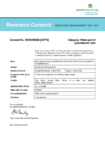
This document summarises the conditions, rights and responsibilities granted under resource consent WGN040360 [23776]. Read more here

date_range Published 22 Dec 2016
Download now (PDF 239 KB) get_appOfficers Report
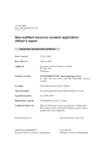
This document outlines the merits of the application and analyses the information provided by the applicant against the all appropriate sections of the RMA and relevant plans. Read more here

date_range Published 12 Jul 2004
Download now (PDF 88 KB) get_appApplication Documents
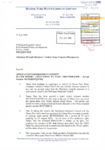
This document is the original resource consent application from June 2004. Read more here

date_range Published 21 Jun 2004
Download now (PDF 22 MB) get_appApplication Correspondence April 2004 to June 2004
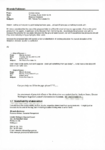
This document collates all the correspondence between GWRC and Petone Pure Water Limited regarding resource consent WGN040360 [23776]. Read more here

date_range Published 22 Jun 2004
Download now (PDF 8.3 MB) get_appCompliance Monitoring Report July 2004 to August 2010
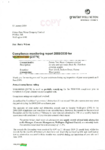
This document is a written description of the findings of inspections undertaken of the resource consent WGN040360 [23776]. Read more here

date_range Published 12 Jul 2004
Download now (PDF 26 MB) get_appCorrespondence Filing
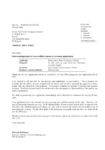
This document includes the granted resource consent for WGN040360 [23776], along with a summary of the conditions and the application lodged. Read more here

date_range Published 26 Jun 2004
Download now (PDF 11 MB) get_appCurrent Status (as of March 2021)
A consent application WGN160011 [37471] was lodged on 9 February 2021 to extend the lapse date for consent WGN160011 [33583].
The consent was due to lapse on 18 February 2021 and the applicant has proposed to extend the lapse date for a further five years; as the consent is yet to be given effect to (no water abstraction has commenced).
This consent is for the take and use groundwater from the Lower Hutt Category B Groundwater Management Unit using two existing bores (R27/1167 and R27/1168) for water bottling purposes. The consent holder has not yet abstracted water under this consent.
GWRC are currently awaiting further information on the progress that has been made to date towards giving effect to this consent (as required under Section 125(1A)(b)(i) of the RMA). No decision has been made on this consent application yet.
Background Information
Unilever New Zealand Trading Limited were granted consent in February 2016 to take and use groundwater from the Lower Hutt Category B Groundwater Management Unit/Waiwhetu Aquifer. This consent was transferred to Petone Property Holdings Limited in April 2016.
The complete correspondence and documentation for this consent can be found below. Some information has been withheld under the Local Government Official Information and Meetings Act 1987:
- To protect the privacy of people; or
- Disclosing the information would be likely to unreasonably prejudice the commercial position of the person who supplied the information.
Consent Documents
WGN160011 [33583] Consent Certificate
![WGN160011 [33583] Consent Certificate preview](/assets/Documents/2022/12/Thumbnails/WGN160011-33583-Consent-Certificate2107799__ScaleMaxWidthWzEwNV0.png)
![WGN160011 [33583] Consent Certificate preview](/assets/Documents/2022/12/Thumbnails/WGN160011-33583-Consent-Certificate2107799__ScaleMaxWidthWzEwNV0.png)
date_range Published 18 Feb 2016
Download now (PDF 2.5 MB) get_appOfficer's Report for WGN160011 [33583]
![Officer's Report for WGN160011 [33583] preview](/assets/Documents/2022/03/Thumbnails/WGN160011-Officers-Report-Feb-2016-Petone-Property-Holdings-Limited892806__ScaleMaxWidthWzEwNV0.png)
This report outlines the merits of the application and analyses the information provided by the applicant under all the appropriate sections of the RMA and the relevant plans. Read more here
![Officer's Report for WGN160011 [33583] preview](/assets/Documents/2022/03/Thumbnails/WGN160011-Officers-Report-Feb-2016-Petone-Property-Holdings-Limited892806__ScaleMaxWidthWzEwNV0.png)
date_range Published 18 Feb 2016
Download now (PDF 3.1 MB) get_appNotification Decision Report for WGN160011 [33583]
![Notification Decision Report for WGN160011 [33583] preview](/assets/Documents/2022/03/Thumbnails/Notification-decision-report-WGN160011892826__ScaleMaxWidthWzEwNV0.png)
This report outlines the recommendation that are made by a Resource Consent Officer from GWRC in regards to the resource consent WGN160011 [33583] application. Read more here
![Notification Decision Report for WGN160011 [33583] preview](/assets/Documents/2022/03/Thumbnails/Notification-decision-report-WGN160011892826__ScaleMaxWidthWzEwNV0.png)
date_range Published 03 Sep 2014
Download now (PDF 67 KB) get_appResource Consent Renewal and Transfer for WGN160011 [33583]
![Resource Consent Renewal and Transfer for WGN160011 [33583] preview](/assets/Documents/2022/03/Thumbnails/WGN160011-Application-documentsRedacted-PART-1892828__ScaleMaxWidthWzEwNV0.png)
This document contains the renewal and transfer of resource consent WGN160011 [33583]. Read more here
![Resource Consent Renewal and Transfer for WGN160011 [33583] preview](/assets/Documents/2022/03/Thumbnails/WGN160011-Application-documentsRedacted-PART-1892828__ScaleMaxWidthWzEwNV0.png)
date_range Published 15 Jul 2015
Download now (PDF 12 MB) get_appTechnical Report for WGN160011 [33583]
![Technical Report for WGN160011 [33583] preview](/assets/Documents/2022/03/Thumbnails/WGN160011-Application-documentsRedacted-PART-2892830__ScaleMaxWidthWzEwNV0.png)
This report is a technical assessment report to support an application to renew a groundwater take consent (resource consent: WGN160011 [33583]).
Read more here
![Technical Report for WGN160011 [33583] preview](/assets/Documents/2022/03/Thumbnails/WGN160011-Application-documentsRedacted-PART-2892830__ScaleMaxWidthWzEwNV0.png)
date_range Published 01 Jul 2015
Download now (PDF 24 MB) get_appResource Consent Application for WGN160011 [33583]
![Resource Consent Application for WGN160011 [33583] preview](/assets/Documents/2022/03/Thumbnails/WGN160011-Application-documentsRedacted-PART-3892850__ScaleMaxWidthWzEwNV0.png)
This is the original resource consent application for WGN160011 [33583]. Read more here
![Resource Consent Application for WGN160011 [33583] preview](/assets/Documents/2022/03/Thumbnails/WGN160011-Application-documentsRedacted-PART-3892850__ScaleMaxWidthWzEwNV0.png)
date_range Published 01 Jul 2015
Download now (PDF 23 MB) get_appCorrespondence and Filing WGN160011 [33583]
![Correspondence and Filing WGN160011 [33583] preview](/assets/Documents/2022/03/Thumbnails/WGN160011-OurSpace-documents-Aug2015-Jan2016Redacted892852__ScaleMaxWidthWzEwNV0.png)
This document contains all the correspondence between the applicant and GWRC regarding resource consent WGN160011 [33583]. Read more here
![Correspondence and Filing WGN160011 [33583] preview](/assets/Documents/2022/03/Thumbnails/WGN160011-OurSpace-documents-Aug2015-Jan2016Redacted892852__ScaleMaxWidthWzEwNV0.png)
date_range Published 25 Aug 2015
Download now (PDF 13 MB) get_appGet in touch
- Phone:
- 0800 496 734
- Email:
- info@gw.govt.nz
